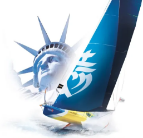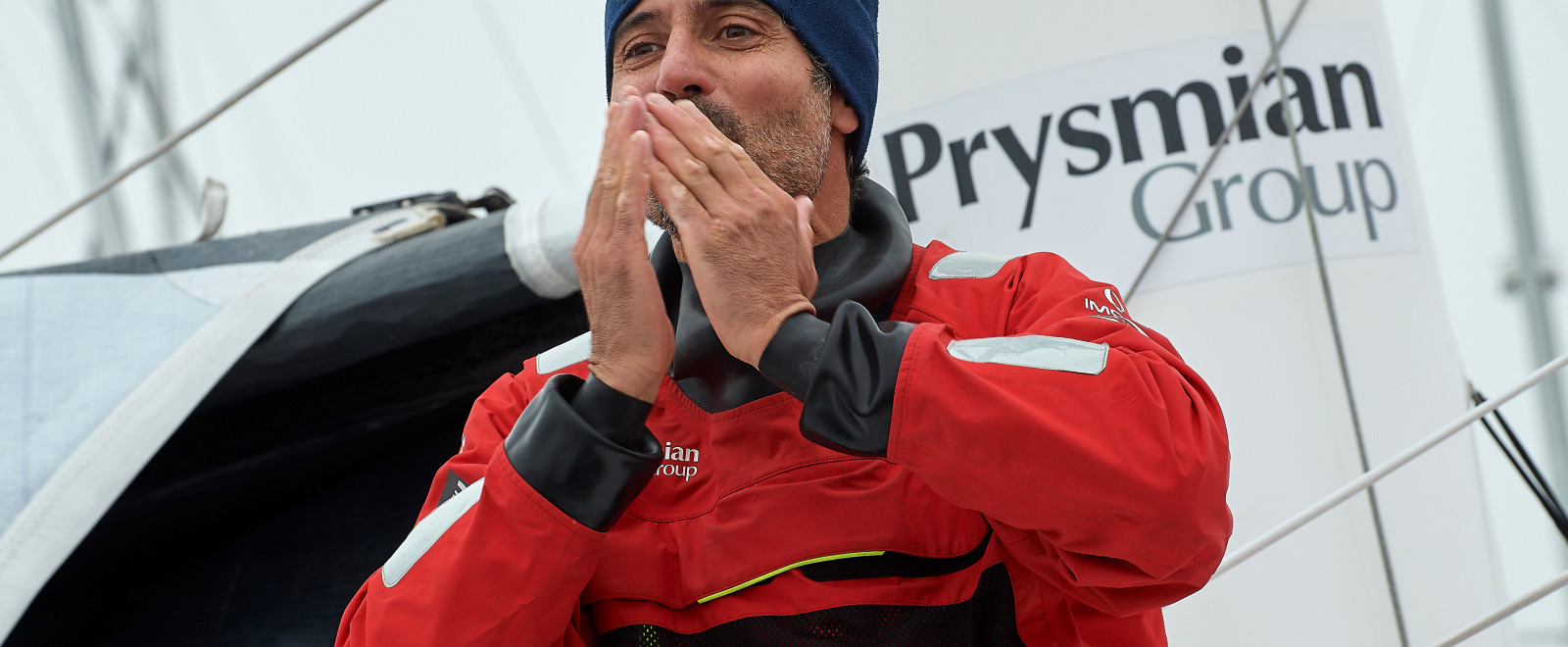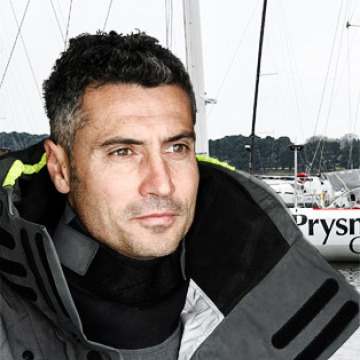We prepared for this VG really quickly – a year and a half – my team are all people who have never done a Vendée Globe. We were really like with a knife between the teeth [like pirates]. I want to keep navigating with my boat after the finish and did not have the money to fix the boat if it was broken, so I needed to make a good ranking without breaking the boat.
When my team came on board after the finish they didn’t say anything but they kissed me and embraced me.
At the beginning I was just hoping to finish and telling myself that 10-15th place would be good – we had a lot of new foilers in the line up. I saw in the Transat Jaques Vabre that some boats are 1-1.5 knots faster, so you have to accept this.
I experience the solitude well – I spoke often with my wife, put my earpods on, trimmed the sails and talked to the children. Of course some weekends I would have liked to be able to trim the sails, leave the pilot on and fly back home – at those times you are very nostalgic.
I did have some technical issues – I went to the top of the mast three times, I had problems starting the engine for charging, issues with the hydrogenerators and had battery problems in the great south. These were moments of stress for me – the problems stressed me but didn’t stop me going all the way. I talked to Isobel after her keel ram broke and cannot imagine how much she must have suffered – the inner strength she must have needed to get to Brazil is incredible.
When I had problems I tried to react in the best possible way. Sometimes it was very hard but I wanted to share positivity for people back home who were struggling with lockdowns and curfews. I had difficult days as well, but I chose my difficultly and didn’t see any point in spreading my problems to those that have difficulties in life they did not choose.
The Vendée Globe is hard, very hard. When you rest you don’t rest like at home. After a triathlon I go home, shower, eat, sleep and then have more energy the next day. But the Vendée Globe is not like that – you never charge your own batteries up to 100 per cent – they go to 90 then to 80 then eventually to 40-50 per cent.
During any race there is always a time I question what I am doing here. But I also know myself and for me that’s a sign I’m pushing my limits – that’s what I love about this solo racing. This requires energy, fatigue and failure. But I don't call it failure – I call it experiences.
You have to find a solution – at sea you can’t avoid things you don’t like. When you push your limits like this the sea gives you the opportunity to grow. On land we can get out of our difficulties easily – but then you learn nothing. When you choose difficulty you learn and you grow and renew – that’s what pleases me.
In everything I do, even making pasta, the only thing I want to know afterwards is how I can do it better. It’s difficult to work with me because I expect others to be the same. It’s my style, but it’s tiring.
Today the boats are not tolerant – I’m not a naval architect, but need to share my hands-on experiences with the architects. I took a lot of notes to share – foils you can retract are not a problem, it’s the hull when it crashes off the waves. I think there is work to do on the shape of the hull.
We also have to work on ergonomics and on safety for this class – the boats don’t have enough protection and safety for the speeds we are expecting. When you move in the boat at speeds of 28-30 knots you can easily hit the forward bulkhead.
Before leaving for the Vendée Globe I had heard in the south you eat 5,000 calories per day. After four days I discovered this is a really hard job – it’s not easy at all. I forced myself, but never managed to do it, but I didn’t lose weight.







